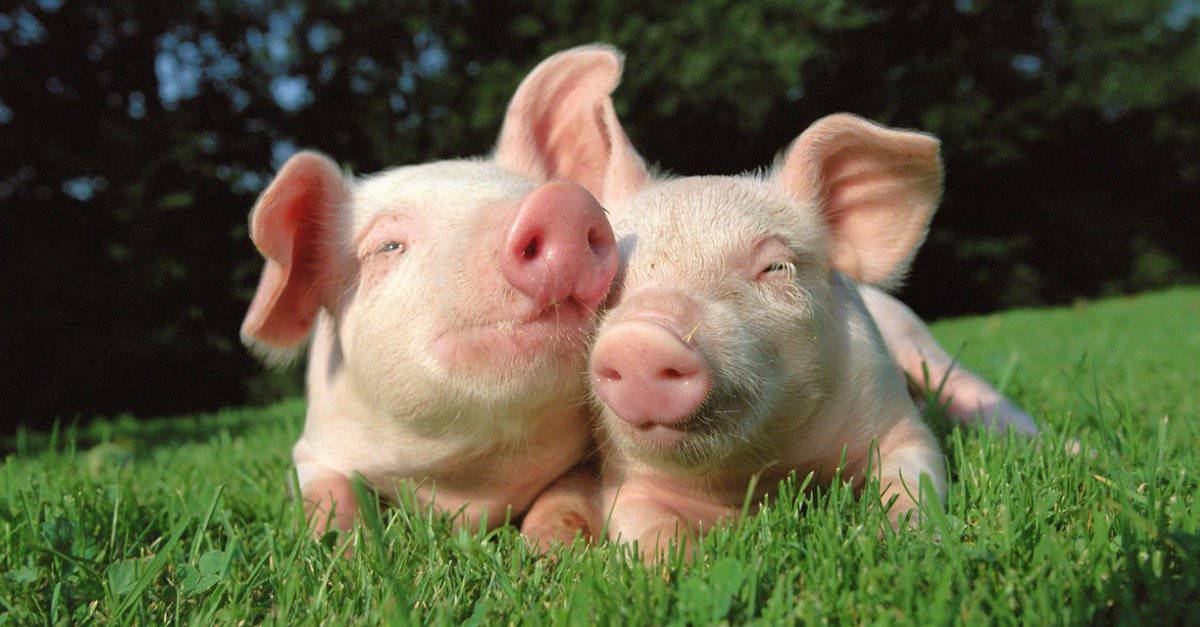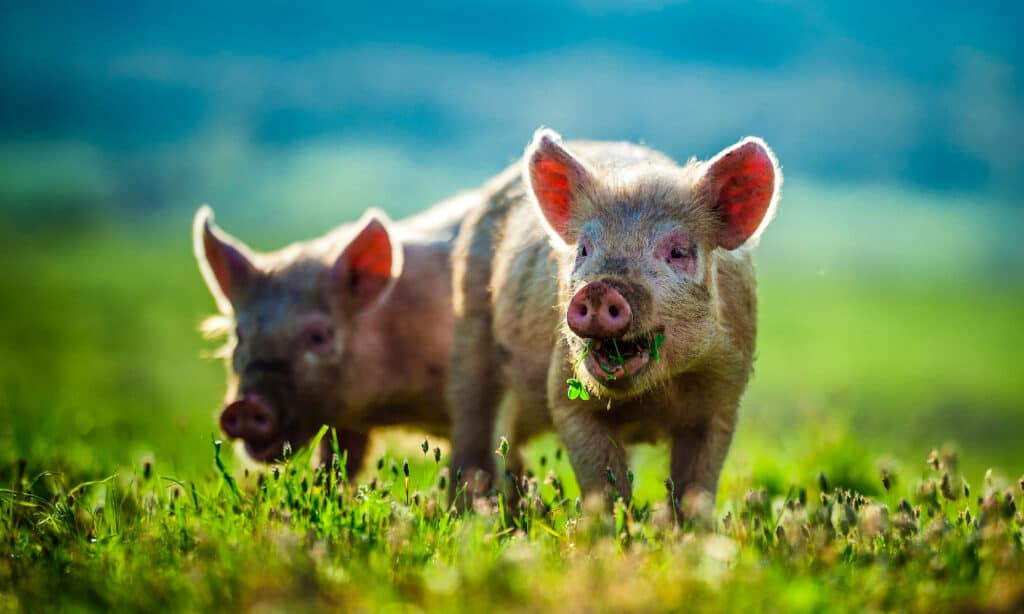
Pigs are omnivores, which means they eat plants and animals.
©Chumash Maxim/Shutterstock.com
Pigs are unique animals with distinctive characteristics. However, few male vs. female pig differences exist when the pigs are young. The term pig describes immature swine that is less than 180 lbs. Pigs grow into hogs, with the females being called gilts until they have their first litter of piglets. After the female gives birth, they are called sows. The males are called boars unless they have been castrated. A castrated male is a barrow.
Pigs are omnivores, which means they eat plants, and they also eat animals. In other words, pigs are not picky eaters. To wash all that food down, farm pigs drink as much as 10 gallons of water daily. Pigs that do not live on a farm are called feral, and the farm dwellers are called domesticated.
Here we’ll explore the behaviors, sizes, and other factors of the swine family while focusing on male vs. female pig differences. The two most popular reasons for raising pigs are for pets or meat production. The physical and behavioral differences between males and females help determine the most suitable roles for each.
1. Male vs. Female Pig Differences: Physical Traits
Males
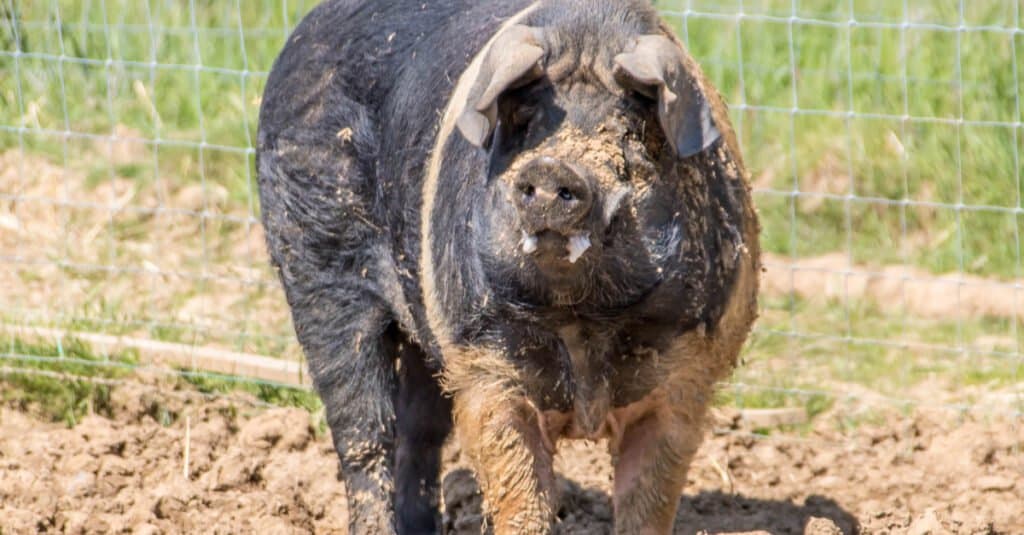
Intact male pigs are normally taller and longer than female pigs.
©Penny Hicks/Shutterstock.com
Male pigs start to show their physical differences from those of the females at about 12 months of age. By the time they are 12 months old, the males tend to be taller than the females of the litter.
At two to three years, pigs begin to grow tusks. Both the male and the female will grow tusks, but the male tusks are longer and more pronounced than those of the female.
Females
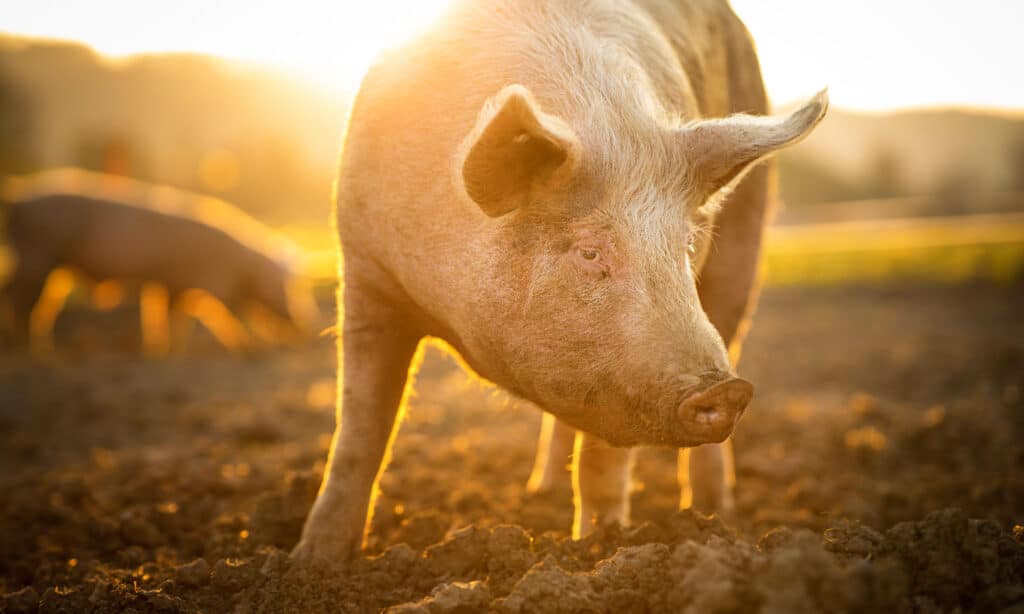
Male vs. female pig differences include the fact that females have longer backbones.
©l i g h t p o e t/Shutterstock.com
Female pigs are normally smaller and weigh less than male pigs. Also, female pigs normally have a longer backbone than males. Female pigs grow slower and are not as muscular as the males. The female pigs have shorter legs than the males, which aids in the mating process. Male and female pigs are sexually mature at six months of age.
Female pigs weigh between five and 20 pounds less than male pigs. However, both genders weigh about the same when they are born. The weight differences are obvious when the pigs are one month old. As they mature, the differences in their weights increase.
2. Male vs. Female Pig Differences: Temperament
Males
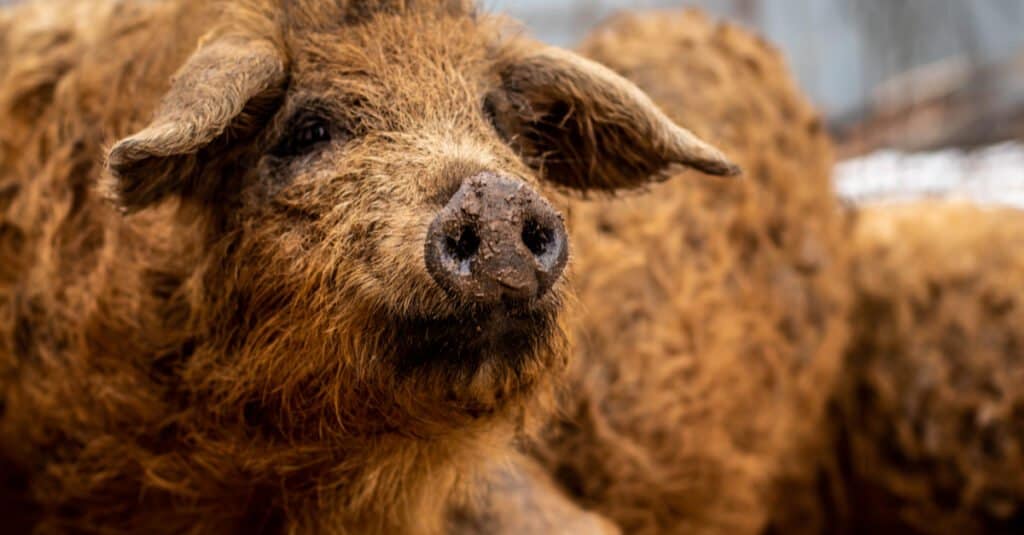
Male pigs are more aggressive about food; therefore, they grow faster.
©Waidelotte/Shutterstock.com
- Males are more aggressive, especially with food.
- Males are less social.
- Males follow the passel or team closely but remain away from the other animals.
- Males avoid piglets as much as they can.
Females

Female pigs are more social and will snuggle with other pigs.
©YRABOTA/Shutterstock.com
- Females are calmer than males.
- Females like to be petted and snuggle close to other pigs.
- Females are not as destructive as males.
3. Male vs. Female Pig Differences: Pets
Males

Male pigs are not as suitable as pets as female pigs.
©iStock.com/Appfind
Male pigs are not the best choice as pets. Their hormones and mentality cause them to be standoffish and not as well suited to being pets.
If you want to make a male pig into a pet, have the pig castrated. The reduction of hormones in the barrow will create a mild-tempered animal.
Females

Female pigs are more docile and suitable as pets.
©Simun Ascic/Shutterstock.com
Female pigs are more docile and safer to keep around children and other animals, whereas males are unpredictable and aggressive.
Female pigs become accustomed to their pens or enclosures. If they get out of their pen, they will normally return to it when they are ready to rest, but male pigs must return to the enclosure.
4. Male vs. Female Pig Differences: Meat Producers
Males

Male pigs produce meat with a higher protein content.
©Carolyn Croyle/Shutterstock.com
- Meat from boars has a higher protein content.
- The flavor of the meat is stronger and gamier.
- There is more fat on a male pig.
Females
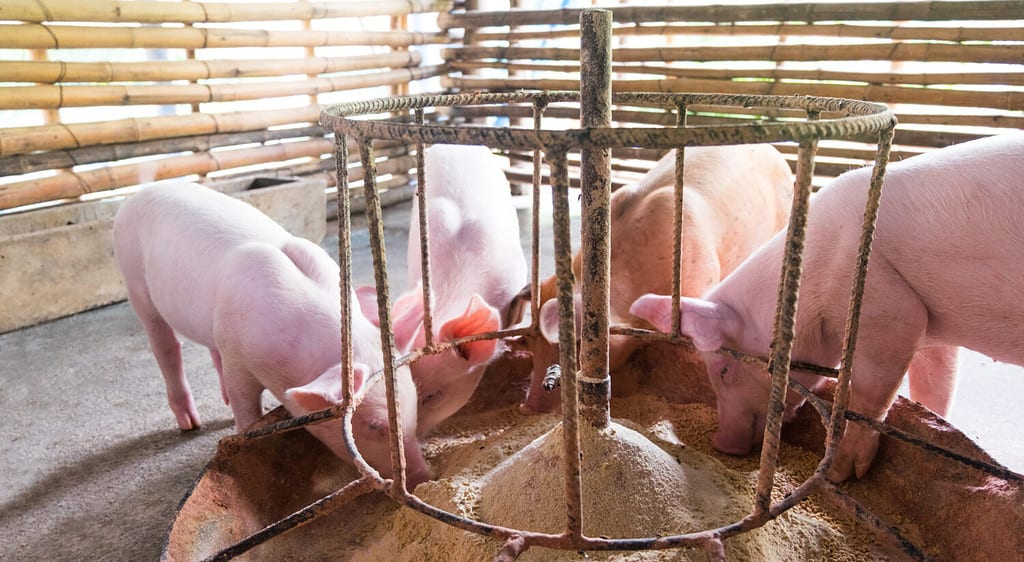
Female pigs have longer backbones and produce more pork chops than males.
©chadin0/Shutterstock.com
- Female pigs produce more pork chops due to their longer backbones.
- Female pig meat has less fat than male meat.
- The flavor of meat from a female pig is milder.
- Meat from a female has less odor than meat from a male.
5. Male vs. Female Pig Differences: Show Animals
In the United States, 4H programs are popular in rural areas. In 4H programs, children raise an animal and learn how to care for it by feeding and training it. At the end of each 4H program season, owners bring their animals to the fair to be judged. Male vs. female pig differences are numerous if you consider a pig as a show animal.
Males
- Hard to handle.
- Unpredictable.
- Pungent odor.
- Taller
- More destructive
Female
- More docile.
- Longer.
- Easier to train.
- Easier to keep in a pen.
- Gains weight slower.
Thank you for reading! Have some feedback for us? Contact the AZ Animals editorial team.

